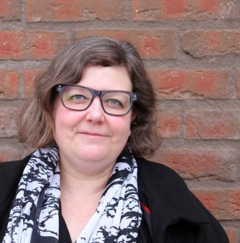Who controls public space?

Among the questions Maria Håkansson has researched is whether everyday environments, such as mass transit or residential neighborhoods, can serve as good meeting places for people from all walks of life.
Among the questions Maria Håkansson has researched is whether everyday environments, such as mass transit or residential neighborhoods, can serve as good meeting places for people from all walks of life.

She begins the second stretch of the KTH Researchers Relay, by taking Rakel Wreland Lindströms question: Who has control over the public space?
“There are several different answers that depending on how we perceive what public space is. A basic answer is that public space is created by all of us together – in conversations, meet-ups and other interactions. Without people there is no city, just a physical structure. So public space is about more than public places, that we normally think about – streets, squares and parks. The public space can partly be interpreted as that which is possessed by the public (as opposed to private) and is accessible to all people – such as libraries, swimming halls and other meeting places.
“Then there are laws and rules about what and how things can be done. Demonstrations are allowed; threats against ethnic groups are not. We can’t carry a knife in a public place. We can practice freedom of expression. The public space is what we as individuals and a society make it.”
Thanks for explaining that. What is the next step in your research?
“My research concerns the nature of meetings between different groups and different expertise areas and different societal planning processes, or between politicians and citizens. It can also be how environmental knowledge and sustainable development enter into discussions concerning economic development.
“Right now I’m working on a project concerning cultural environment issues. Is it possible that, in the same way that a road project can compensate for nature conservation limitations, projects can compensate for the cultural heritage?
“Another issue I am working with is the planner’s professional role, particular in relation to sustainable development. The connection with public space is perhaps most clear in a planned project about how different groups, especially young people, have the possibility to participate in formal planning processes, and affect the public space in another way.”
What are the challenges or barriers do you face, if any?
“The foremost challenge in practice has to do with communication. It can be difficult to mediate and understand our respective world views and knowledge. And to see that others perceive a problem in another way and so they propose other solutions. This is also very much the case in areas that we think of as technical and objective. But we know from history that problems have often had competing solutions where many different factors – economic, social, cultural, technical – led to any of them at any given time becoming the dominant and accepted model.
“In the planning process it’s always about different kinds of trade-offs between various proposals that can have very different consequences. Two entirely correct analyses that can solve a specific problem are perhaps not possible to combine, no matter how well thought out they are.
“In terms of research there are no direct barriers or challenges. There is a lot to study since it’s going on all the time, but then it’s probably a question of time and resources. There is also the fact that our own work and how we educate our students to be the future experts is very interesting from my perspective, so really I see no barriers.”
What will the results be used for?
“Primarily it is a contribution to better understanding about how planning and the decision-making processes can be organized, but also to understand how processes and cooperation and, by extension, the physical environmental are affected.
“It can for example clarify why a political decision to increase waste recycling does not get the expected result, or that a design of an environment or a technical solution which works well in one place doesn’t give the same result in another. The idea is to contribute to sustainable development.”
Jill Klackenberg